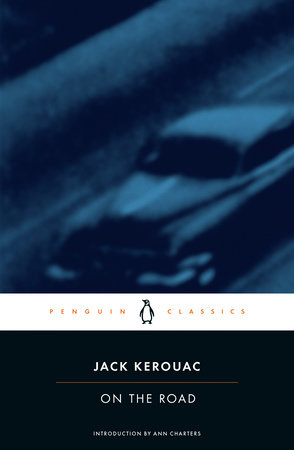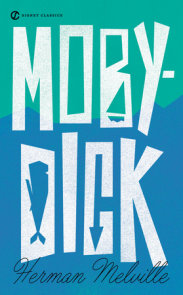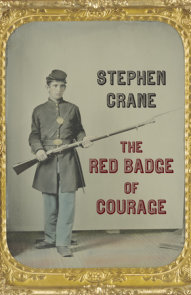READERS GUIDE
Questions and Topics for Discussion
INTRODUCTION
And for just a moment I had reached the point of ecstasy that I always wanted to reach, which was the complete step across chronological time into timeless shadows, and wonderment in the bleakness of the mortal realm, and the sensation of death kicking at my heels to move on, with a phantom dogging its own heels, and myself hurrying to a plank where all the angels dove off and flew into the holy void of uncreated emptiness, the potent and inconceivable radiancies shining in bright Mind Essence, innumerable lotus-lands falling open in the magic mothswarm of heaven.
In 1954 Jack Kerouac had a vision in a Catholic church in Lowell, Massachusetts, that told him that the real meaning of “Beat” was “Beatific,” in the sense of converting alienation into spiritual transcendence. On the Road, first published in 1957, epitomized to the world what became known as “the Beat generation” and made Kerouac one of the most controversial and best-known writers of his time. Fictionalized as Dean Moriarty, Kerouac saw his friend Neal Cassady as an “archetypal American Man,” and rendered his character both “Beatific,” in the sense mentioned above, and “Beat,” in the sense of being alienated from the mainstream of American middle-class life. In this novel of life on the road, experience for Dean Moriarty and Sal Paradise, Kerouac’s fictional alter ego, who shambles along after Dean’s madcap adventures, must be intensified to strip one’s rational preoccupations with this world and give them a sense of oneness with the All-Knowing God. In search of the ever elusive “IT,” “the moment when you know all and everything is decided forever,” the two friends’ search for ecstasy takes them back and forth across the United States, and in one final trip down into Mexico, getting their kicks from all-night talk sessions, drunken parties, sex, drugs, an orgy with Mexican whores, and, most importantly, an exploration of jazz. Behind the wheels of numerous automobiles, the two young men zigzag across the continent “leaving confusion and nonsense behind and performing [their] one and noble function of the time, move.”
Upon publication, On the Road met with both praise and wild enthusiasm from papers as diverse as The Village Voice andThe New York Times, and an equal if not greater measure of skepticism and critical dismissal by the mainstream literary establishment. Rather than representing “a new trend in American literature,” as Kerouac had claimed, On the Road was criticized for presenting “uncouth” characters (such as Allen Ginsberg as “Carlo Marx,” and William Burroughs as “Old Bull Lee”), and the “frantic fringe” of delinquents (e.g., Herbert Huncke as “Elmo Hassel,” the down-and-out Times Square hustler). One of the most sarcastic put-downs came from author Truman Capote, who responded to Kerouac’s boast that he had created the original manuscript within a three-week burst of writing, with the snide comment, “That isn’t writing; it’s typing.” In addition, within the avant-garde literary movements on the East and West coasts there was suspicion. Following the 1957 obscenity trial for Allen Ginsberg’s poem Howl and publication of On the Road as covered in Time, Life andNewsweek, many radical artists felt that the sudden fame of the Beat phenomenon as a whole owed much to sophisticated packaging and promotional techniques. In fact, more than a few poets saw Kerouac’s friend, Allen Ginsberg, a former adman, as more a crowd-pleasing publicity hound than a serious poet. The neo-romanticism of the beat writers obviously hit sensitive nerves in several literary camps, for different reasons, all at once. Those reviewers and writers who came to Kerouac’s novel with a less biased eye, however, could not deny the ecstatic energy of his prose style, with its structural and emotive debt to the jazz music Kerouac so much loved.
What the Beats understood and identified with in jazz, was protest against the white middle-class world. As Sal Paradise observes in part one of the novel, “Every single one of us was blushing. This is the story of America. Everybody’s doing what they think they’re supposed to do.” Kerouac intuitively understood that you can’t have jazz without protest, and along with his Beat friends regarded jazz musicians like Charlie Parker and Thelonious Monk as true American geniuses, heroes, and rebels. Just as Sal later thinks Dean “look(s) like God,” while high on marijuana bumping along the back roads of Mexico, those jazz musicians who can really “blow” are the “prophets” and “shepherds” come to lead the straying but faithful back to “the golden world that Jesus came from.” It is therefore not surprising that many of the freshest and most startling descriptive passages in On the Road are of roadhouse juke-joints and wild late-night jam sessions in urban jazz clubs filled with all the vagaries of nightlife one could imagine. In these scenes positioned throughout the novel to punctuate the emotional ups and downs of the road-weary heroes, one encounters Kerouac’s most successful rendering of the simultaneity of antithetical images and meanings of both “down-and-out” and “beatific.”
To achieve the improvisational creativity of the great jazz players, Kerouac experimented for several years before arriving at what Allen Ginsberg, referring to Kerouac’s poetic sensibility, termed a “modality of consciousness,” signifying the aesthetic recreation of jazz improvisation in the creative prose of On the Road. To “step across chronological time,” so as to temporarily escape the linear road that could only end in death, Kerouac reassessed linearity not only at the level of individual sentences and paragraphs, but in allowing the plot of his novel to zigzag in a spatial, nonlinear relationship of language and form. This way of writing is what Kerouac called “spontaneous prose.” Kerouac had not only an amazing ear for the rhythmic and patterned sounds of human speech, filled with alliterative play, but an extraordinary memory for the words he heard—sometimes complete conversations, which he sprinkles throughout his work. Not confined to concrete geographical details, Kerouac’s inspired play of sound sets up an impressionistic canvas of forms, a cyclical movement of tropes become “riffs” that are integral to the notion of the hero and to the quest for “IT.” Spontaneous prose, in Kerouac’s definition, takes on the semblance of linguistic entities unaligned with the conventional subject-verb arrangement of English sentences, thereby, opening up the sense of time and allowing the movement, flashes, and fluctuations of jazz, and by extension, spiritual transcendence. Thus, Kerouac’s “endless road” reveals his ultimately ironic stance about America—that it is beat. Tempered through drugs and drinking, sad and mournful, it remains true to Whitman’s vision of a secularized heaven on earth, brought forward into the era of Bebop jazz.
In part three of On the Road, as all their friends take turns berating Dean for his selfish, reckless, and thoughtless behavior, Sal Paradise suddenly sees his friend Moriarty as “the Saint of the lot”: “He was alone in the doorway, digging the street. Bitterness, recriminations, advice, morality, sadness—everything was behind him, and ahead of him was the ragged and ecstatic joy of pure being.” Sal Paradise, like the real-life Kerouac, vacillated between the two poles of beat, the secular and the holy, in his search for the elusive “IT.” “As we crossed the Colorado-Utah border I saw God in the sky in the form of huge gold sunburning clouds above the desert that seemed to point a finger at me and say, ‘Pass here and go on, you’re on the road to heaven.'” Soon thereafter, however, gazing out the car window at the Nevada desert landscape, Sal confesses that he’s more interested in “some old rotted covered wagons and pool tables,” weather-beaten signs with forgotten messages and names “still flapping in the haunted shrouded desert wind.” Similarly, and throughout his life, Kerouac moved back and forth between the adventures he experienced with his beat friends, and the domesticity of his mother’s home. In the novel, Sal Paradise transitions back and forth between his road trips with Dean and the home of his aunt in Paterson, New Jersey. The search for “IT” becomes the unending quest that both Kerouac in his writing, and Paradise in his spiritual hunger strive for without ever fully attaining—discovering the “joy of pure being” is experienced, at best, only fleetingly. “Isn’t it true that you start your life a sweet child believing in everything under your father’s roof? Then comes the day of the Laodiceans, when you know you are wretched and miserable and poor and blind and naked, and with the visage of a gruesome grieving ghost you go shuddering through nightmare life.”
ABOUT JACK KEROUAC
Jack Kerouac was born Jean-Louis Lebris de Kerouac on March 12, 1922, the youngest of three children in a French-Canadian family in the factory town of Lowell, Massachusetts. The family lived in French-Canadian neighborhoods in Lowell and spoke the French-Canadian dialect of joual in their home. It was Kerouac’s first language, and he spoke it in conversations with his mother, whom he called “Mamère,” and lived with on and off throughout his adult life. He spent his childhood in Lowell, attending local Catholic and public schools, and his early adulthood in the East, attending Columbia College in New York City on a football scholarship. It was at Columbia College where he first met Neal Cassady, Allen Ginsberg, and William S. Burroughs.
Following a quarrel with the football coach in his sophomore year, Kerouac left Columbia College, joined the Merchant Marines, and sailed to various Atlantic and Mediterranean ports as a seaman during World War II. In 1944, he was arrested as a material witness, having failed to report a homicide committed by Lucien Carr, one of his friends at Columbia. Believing him to have “disgraced the family name,” his father refused to post the $100 bail. On the condition that Jack marry Edie Parker, an art student at Columbia through whom he’d first met Lucien Carr, his father came up with the money. Jack and Edie separated soon afterwards, however, and Kerouac signed aboard another merchant ship.
His first book, The Town and the City, published in 1950, was an attempt to explain “everything to everybody.” Kerouac had borrowed the style and structure of Thomas Wolfe’s Look Homeward, Angel as his literary model for The Town and the City, but grew dissatisfied with the conventional result. As he later stated in a note prefacing his collection of poetry, Mexico City Blues: “I want to be considered a jazz poet blowing a long blues in an afternoon jam session on Sunday.” In a struggle to fashion a method of writing that could capture the freedom and creativity of Bebop in his prose fiction, Kerouac’s encounter with Neal Cassady, whom he would portray as Dean Moriarty in On the Road, proved to be pivotal. Cassady was visiting from Denver with his teenage wife, LuAnne, and staying with Hal Chase, a student at Columbia. Having grown up in Denver, living in skid row hotels with his alcoholic father, and serving time in a reformatory for stealing cars and joyriding, Cassady later decided to become a writer by learning how to write from Kerouac and Ginsberg. At first disconcerted by Cassady’s tough looks and demeanor, Kerouac’s second meeting with Neal early in 1947, described in the opening chapter of On the Road, opened him to the world of sex, drugs, and other wild “experiments” of his Columbia friends.
As early as 1948, Kerouac had begun writing and making notes for the book he was already calling “On the Road.” Following initial bursts of excitement and hope for the project, he ended up dissatisfied, believing his work was too imitative of his models, Theodore Dreiser and Thomas Wolfe, and that his writing failed to capture the spontaneity and freedom of his “road” adventures. Having returned to his mother’s home from one of his trips in February 1949, and emotionally shattered by his wild rides with Cassady, he realized his “factualist” attempts at his “road book” could not be salvaged. In November 1950, feeling his life was drifting, Kerouac impulsively married for a second time a woman he had met a short time before in New York named Joan Haverty. Back in Denver, Cassady had begun writing letters to Jack that stunned both him and his new wife, Joan, with their loose, rambling sentences and meticulously detailed observations. Thinking Cassady’s letters “among the best things ever written in America,” as well as being inspired by the honesty of Burroughs’ first-person narratives of his drug addiction, Kerouac finally found the catalyst he needed to break with his earlier literary models, making the decision to “write it as it happened.”
In April 1951, taping together twelve-foot-long sheets of tracing paper, and feeding them into his typewriter as a continuous roll, Kerouac completed On the Road in a marathon burst of typing that lasted three weeks. Discouraged that his “road” book, along with several other novels and collections of poetry written between 1952 and 1957 were continually turned down by New York publishers, Kerouac gave up on the publishing world and turned to Buddhist practice. In 1953, he began writing reading notes on Buddhism for his friend, Allen Ginsberg. As his Buddhist study intensified, what had begun as notes evolved into an all-encompassing work of nonfiction, incorporating poems, haiku, prayers, journal entries, meditations, fragments of letters, ideas about writing, overheard conversations, sketches, blues, and more. The final manuscript (published as Some of the Dharma by Viking in 1997) was completed in 1956, to become part of what Kerouac thought of asThe Duluoz Legend.
Kerouac was thirty-five years old when On the Road was published in 1957. The media response was unrelenting, and he was besieged with questions about the lifestyle he had described in his novel. Kerouac was never able to convince his critics that the Beat Generation was “basically a religious generation,” and that the specific object of their quest was spiritual. And unfortunately, he never managed to gather all his autobiographical novels together in a uniform binding published with the names of the “real life” people returned to them. He died from abdominal hemorrhaging brought on by his alcoholism on October 21, 1969 in St. Petersburg, Florida, where he had gone to live a year before with his third wife and invalid mother.
DISCUSSION QUESTIONS




















